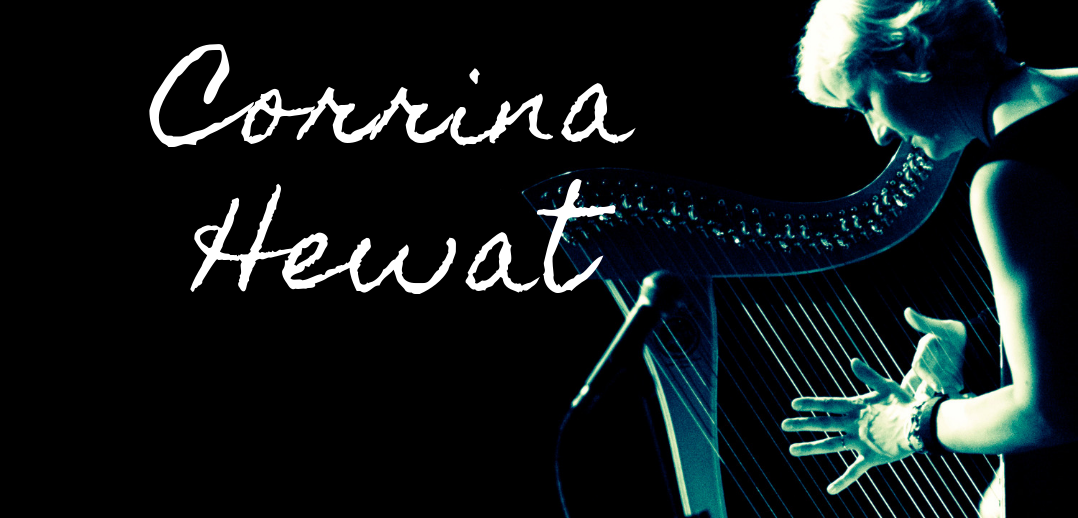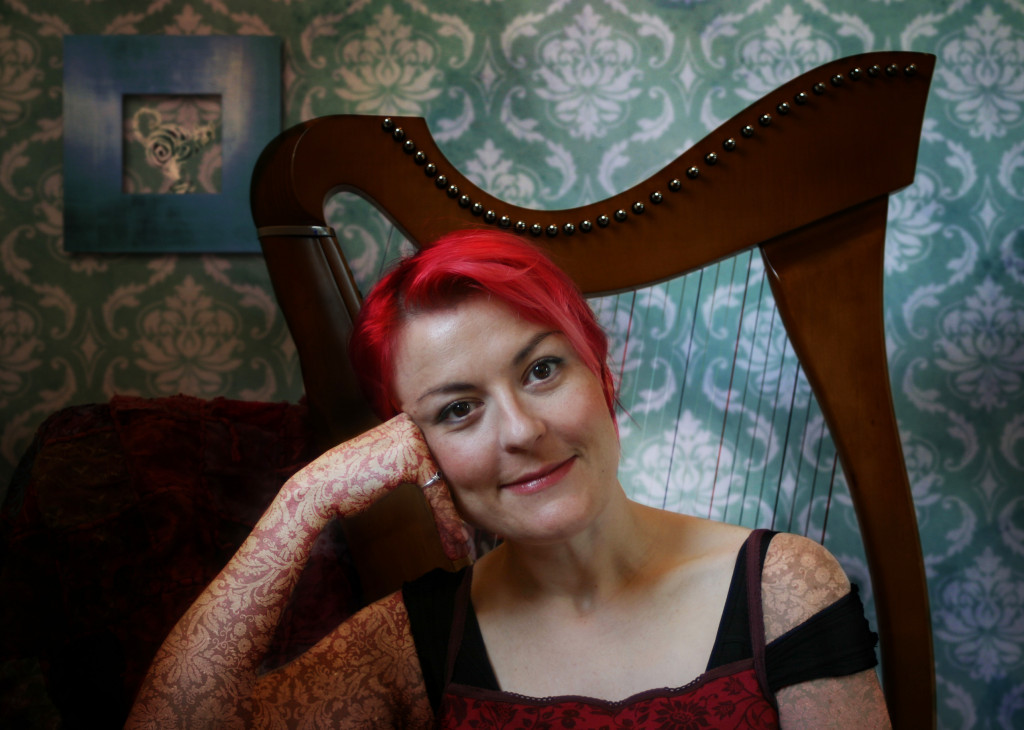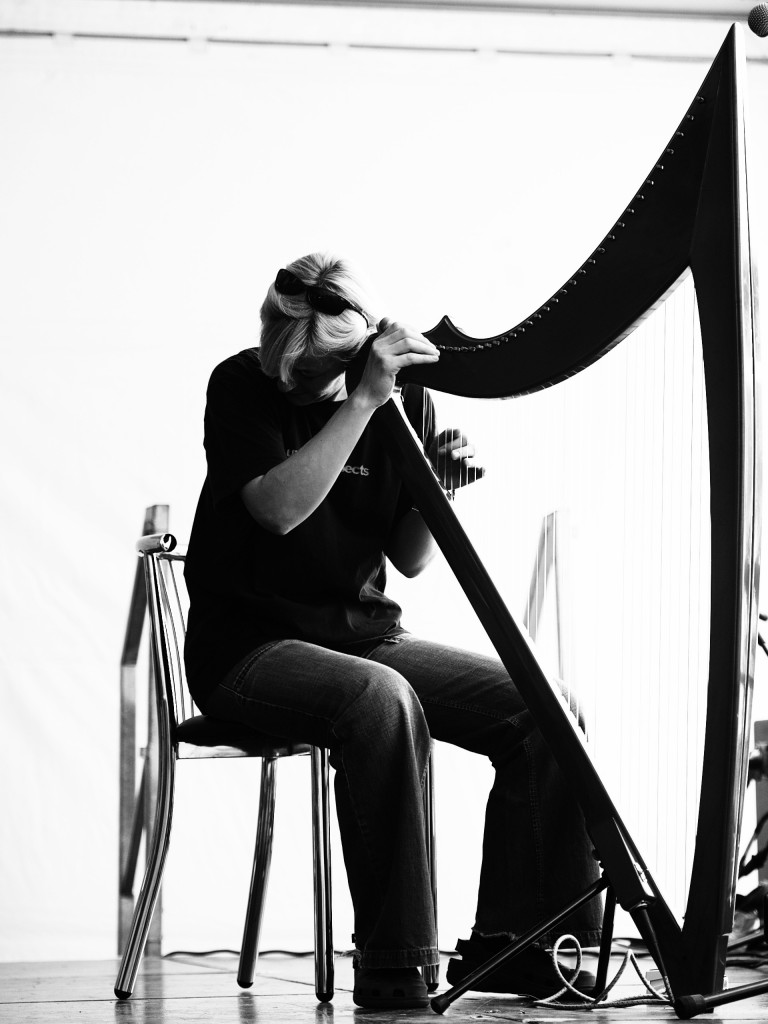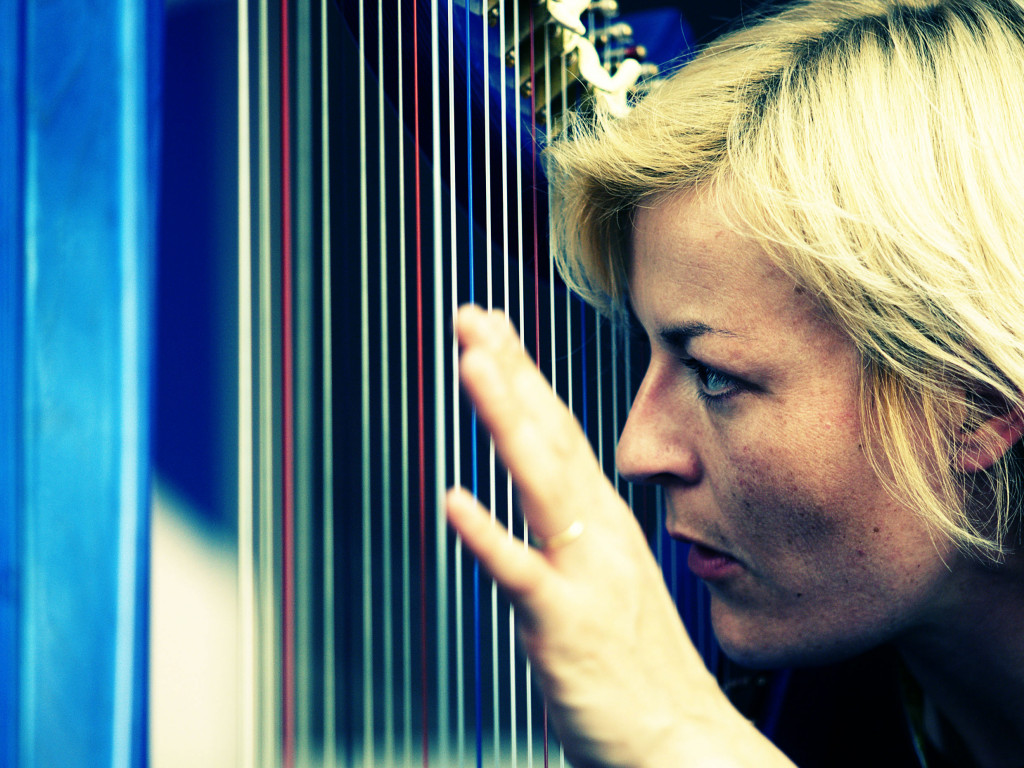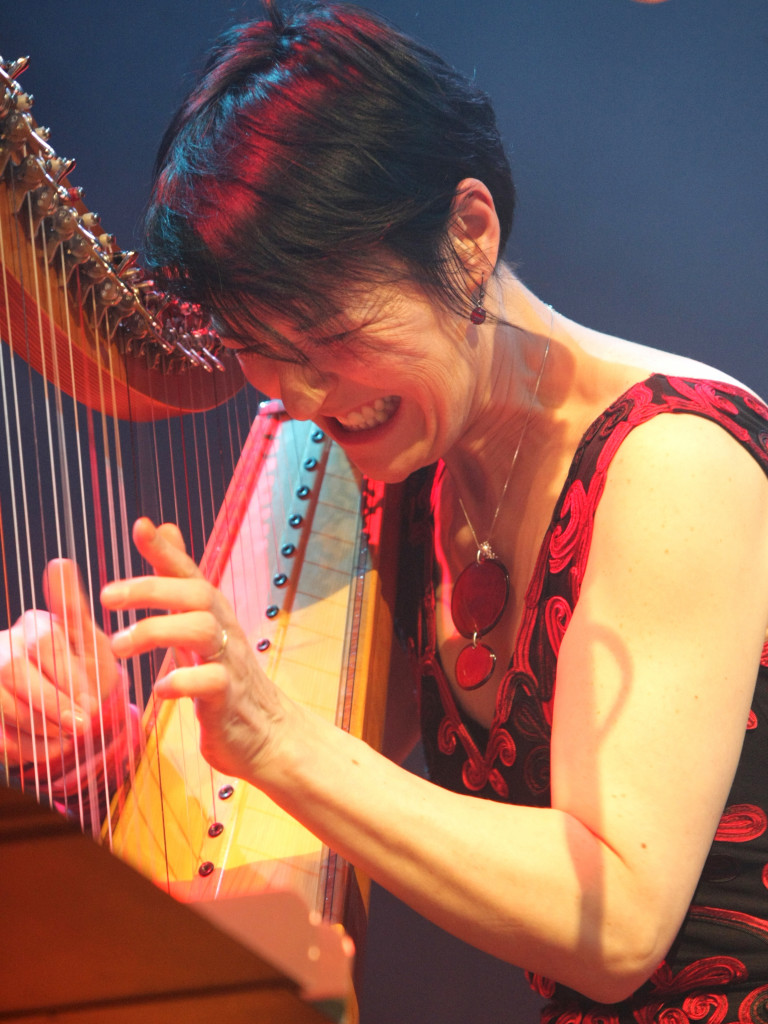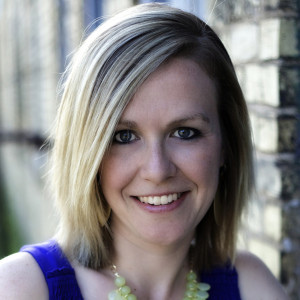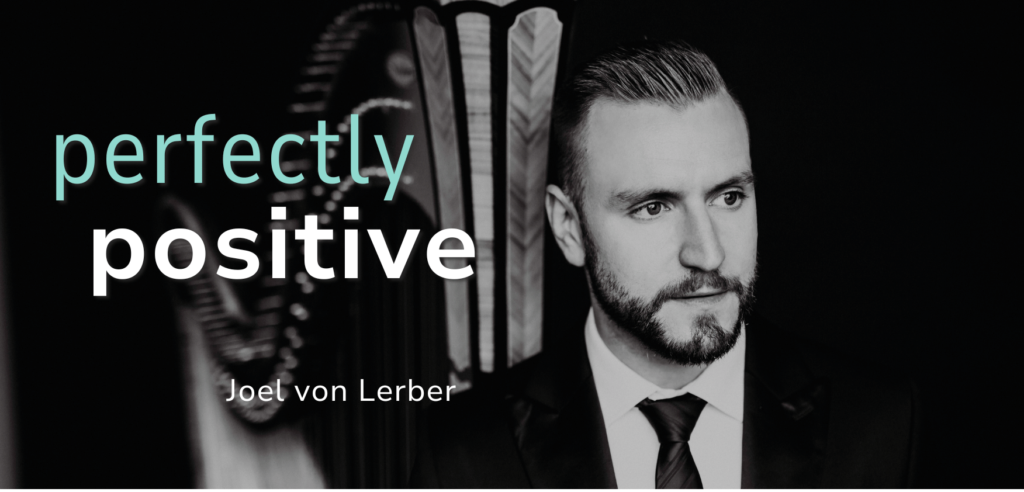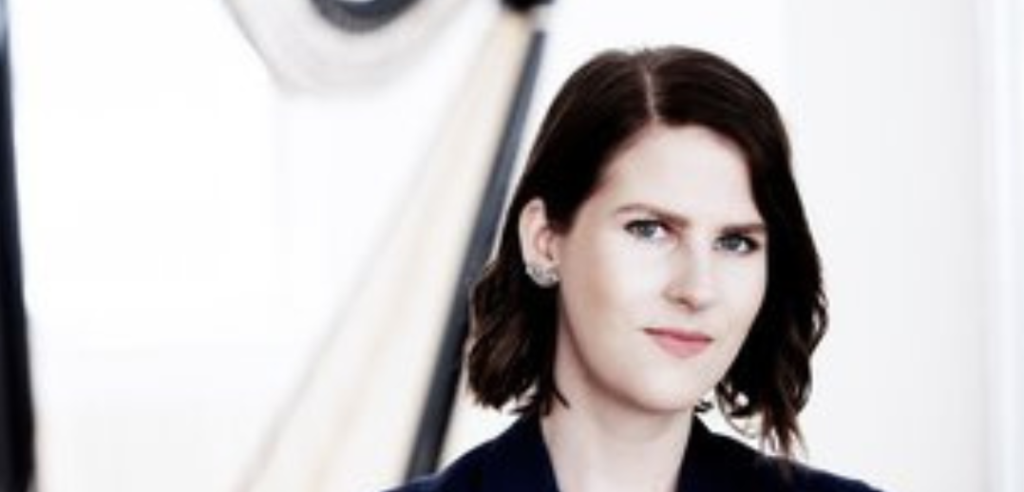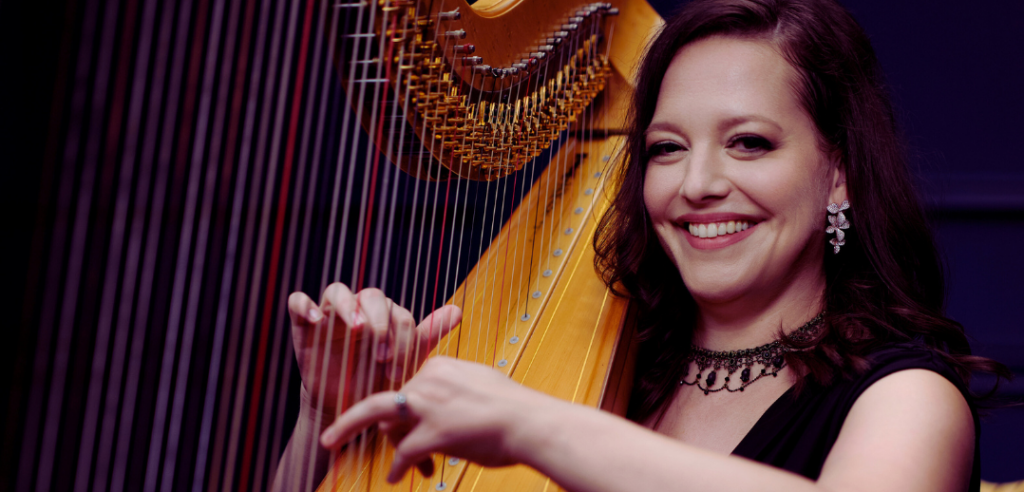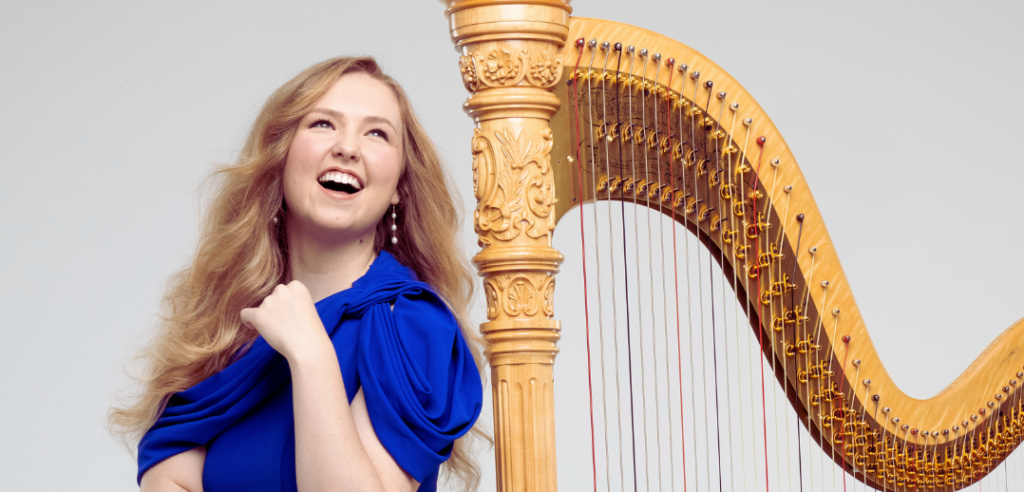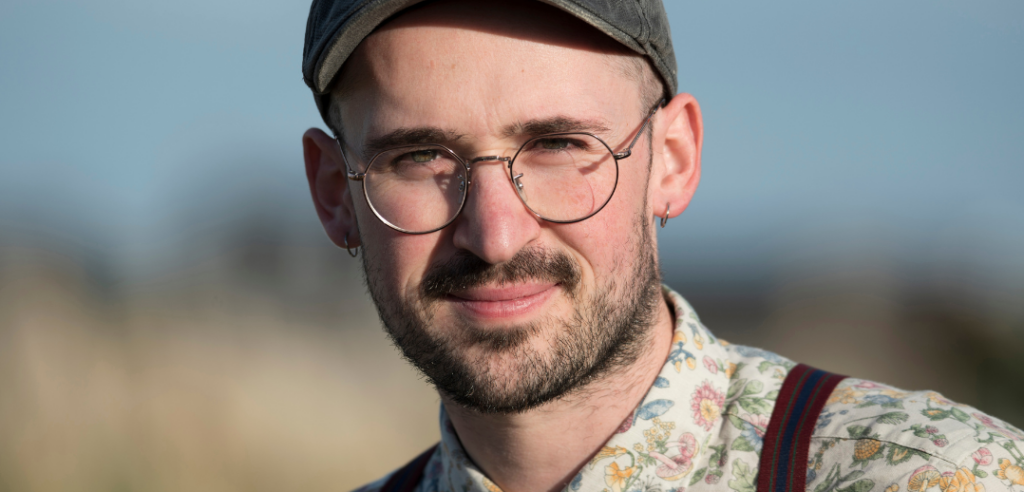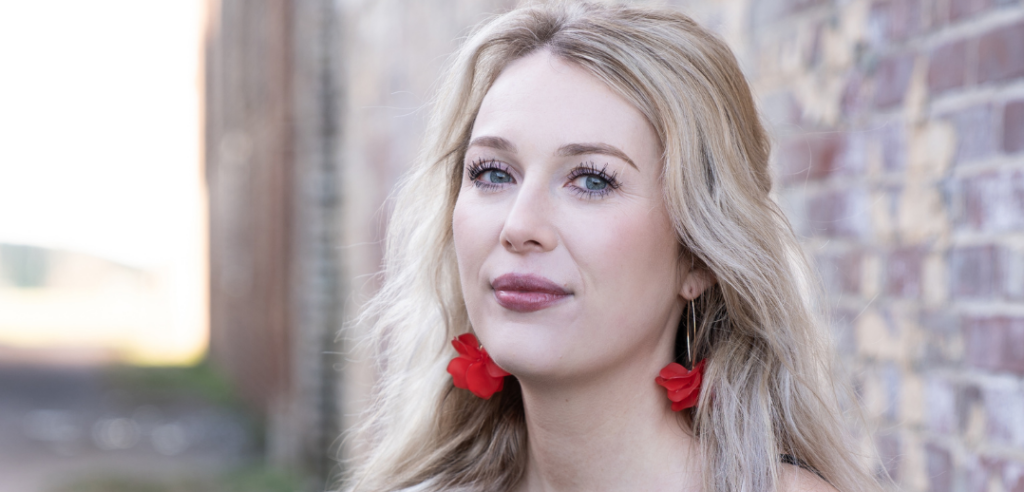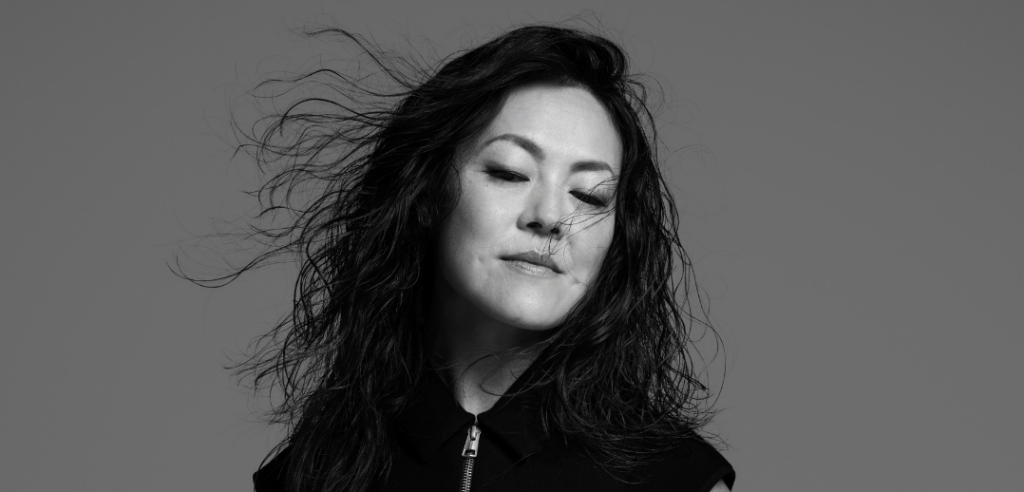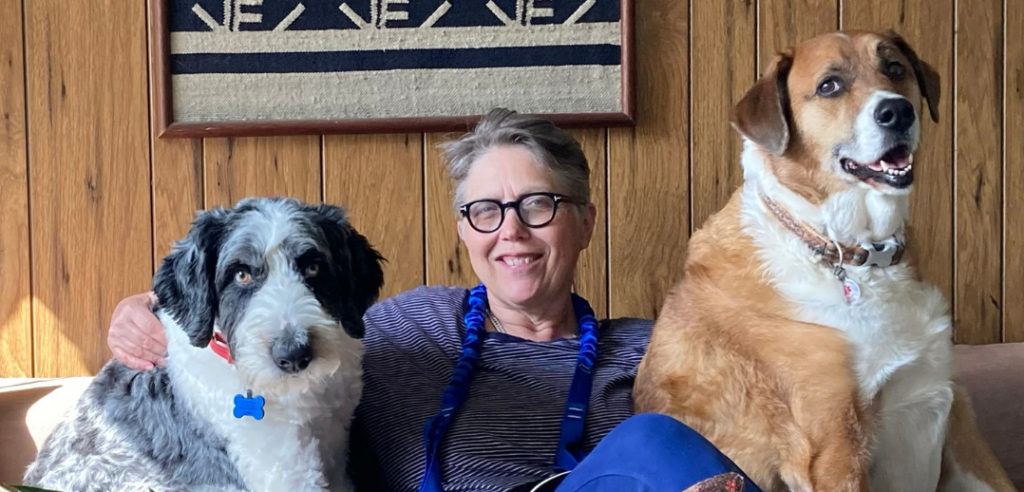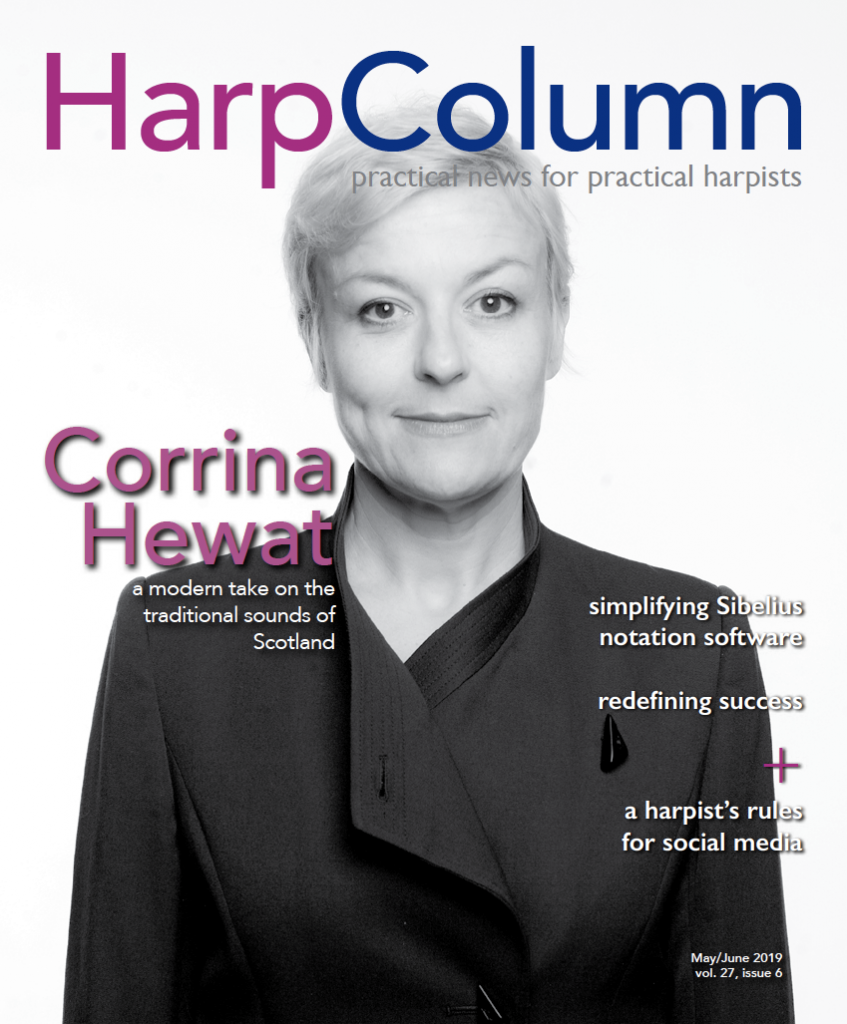Imagine growing up in the beautiful Scottish Highlands, surrounded by the rugged mountains, lush vegetation, and big sky, the landscape accented by ancient castles and mysterious lakes. Corrina Hewat doesn’t have to imagine it—she lived it. It was up against this magical backdrop that Hewat was immersed in Scotland’s music tradition, first with the piano and fiddle, and later with the harp.
Hewat talks about the Highlands with great fondness and a special glimmer in her eye. We found out about her Scottish roots and much more when we caught up with her via Skype from her home just outside Edinburgh, where she was gracious enough to make time to chat with us on the eve of the Edinburgh International Harp Festival.
Harp Column: Tell us a little bit about your involvement with the Edinburgh International Harp Festival and what makes it so special.
Corrina Hewat: It is now in its 38th year and is entirely by volunteers, which is a really important aspect of the festival that everyone gives their time to set it up and run it. I went to the harp festival when I was young, maybe 13 or 14, when I had just started learning the harp. Then I became part of the committee in 2002 and helped run it for a few years. I stepped back from that now, because I’ve run out of time in my life. It’s huge. I’m guessing there are about 400 participants who come and learn during a week of classes and workshops in pedal and lever harp. There are also smaller workshops that involve other aspects of traditional music from around the world. There are great concerts each afternoon and night as well. It’s really become an international harp festival now. The team is made up of very forward-thinking people, but they are all giving their time for free, and it’s very hard work to run that huge festival. All of the money raised from the festival goes back into the Clarsach Society, which is a harp hire organization and has a collection of teachers. It is all connected to a much bigger harp world in the U.K.
HC: What are you teaching at the festival this year?
CH: I am teaching how to make the tune your own—taking traditional music, seeing a tune on a page, and looking at how you transfer that to your own playing and make it your own by adding intros, outros, decoration, different harmony, etc. It’s quite a large idea. I’m not sure how far I’ll be able to take that in an hour and a half class. [Laughs] The other class is about putting tunes into sets: what makes a tune work after another and how you can build your repertoire.
HC: Does putting together these classes help you to examine your own process?
CH: I learn so much from teaching. I end up always teaching what I need to learn myself.
HC: Tell us about your teaching at the Royal Conservatoire of Scotland. How long have you taught there?
CH: I’ve been the principal harp tutor since 2012, but I’ve actually been teaching there since 2000. I followed in the footsteps of Patsy Seddon and Wendy Stewart who were previous tutors.
HC: What kinds of skills do you want your students to leave school with?
We have this thing called kitchen céilidhs where you would get everyone together and we’d meet in the kitchen, usually because it was the warmest place in the house. We’d play music together—we’d sing songs and tell tales.
CH: That’s a good question. I don’t want to teach people to be me. I want them to learn their own style—what they love and what they don’t love, what they’re good at and what they need to work on. So I teach them how to arrange, I teach them theory and harmony, and I teach them various technical aspects. Everything they end up with in their repertoire is their own, though I helped in their process. I want those students to be able to compose in a traditional style or jazz style or whatever style they want to further. I want them to learn how to arrange and develop their own style, so that when they leave college, they feel confident in their style. I want them to be able to work as a solo artist or work with other instrumentalists and artists because they’ve learned how to communicate with other musicians as well.
HC: What would you say are the skills that have served you best in your career and where did you learn those skills?
Scottish Basics
Helpful terms to know
The SCOTTISH HIGHLANDS are the mountainous region encompassing Northwest Scotland.
Held annually each spring in Scotland’s second largest city, the EDINBURGH INTERNATIONAL HARP FESTIVAL brings together musicians from across the U.K. and around the world.
CLARSACH is the Scottish Gaelic word for a Celtic harp.
In the U.K., the word TUTORrefers to a college or university teacher who instructs one student or a small group.
If you want to rent a harp in the U.K., you would HIRE a harp.
HAGGIS, a traditional Scottish dish, is a savory pudding made of sheep heart, liver, and lungs minced with onion, oatmeal, suet, spices, and salt, mixed with stock, and cooked in a casing.
A CÉILIDH is a social event with Scottish or Irish folk music and singing, traditional dancing, and storytelling.
CH: I first learned the harp through a woman named Christine Martin. She was playing a lever harp in a youth hostel on the Isle of Skye when my family was staying there. She asked me if I wanted to try it. I had been playing piano and fiddle, but when I put my fingers on the harp, it felt very natural to me, the way it was laid out and the way the strings felt. I loved the sound of it. My dad didn’t shout at me for making too much noise when I was practicing. All of these practical things made the harp really work for me. She taught me for a year for free. I will never be able to repay her for that, because we didn’t have much money. I hired a harp from the Clarsach Society and she gave me lessons for free. From that year’s work, I then taught myself until I auditioned to the conservatoire, which at that time was called the Royal Scottish Academy of Music and Drama. I actually went there to study drama, but I was a year too young for the course, so they said, why don’t you go upstairs and talk to the music department and come back down in a year when you’re ready. So I went upstairs, but then I never went back downstairs. So I studied classical pedal harp with Sanchia Pielou. She was a founding member and principal harpist with the BBC Scottish Symphony Orchestra since 1935. She taught me the technique, but she was really strict and hit my sticky-up thumbs with a pencil. She taught me perseverance, but also that to punish someone was not the right way to do it. After that I took a year off. I had gotten into drinking and drugs. It was really hard. I took a year to decide what I wanted to do. Classical music was not what I wanted to do. It felt too restrictive. I felt I couldn’t express myself within an orchestra. I felt completely suffocated within it. So I applied to Leeds College of Music to do a degree in jazz and contemporary music on pedal harp, although lever harp was really my thing. But I did a degree in pedal harp and studied with Máire Ní Chathasaigh. She was even stricter! She would make me play things 30 times in a row correctly, and if I got it wrong, she made me go back to the beginning. It was hell. But actually, I was a really bad student because I was resisting everything that she was giving me. But she put up with me, and after a while I realized she wasn’t just teaching me how to play the tunes, she was teaching me how to teach myself. She was giving me the lessons for life, not just for the harp at that moment. Those lessons with her were the most valuable for me—teaching me stamina in my practicing, the perseverance to see the end point and know that I was going to make it no matter how hard it is in the moment, there is a point to it all. You just need to push through that resistance barrier. That was what Máire taught me. I think that was a huge lesson for me, and one that I want to teach my students, knowing that I am not going to see them forever. Knowing that we need life lessons, not just hand technique. Máire was very particular about hand technique and position and decoration. I’m a little more lenient than that when I’m teaching. I don’t require someone to have exactly the same hand position as I do because we all have different hands and life is too short to be hitting someone on the thumb with a pencil.
HC: How many students do you have there?
CH: I have 11 right now. We take in only two or maybe three harp players every year.
HC: What do you think makes Scottish music unique?
CH: It is based on dance music or we’re telling stories. We’re either having a good time or extolling our history or how we feel, and we’ve all got very strong views and values. I’ll admit in our history, it’s been a little chaotic and confusing. We have a need as a Scottish people to let others know how we feel. There’s always something to complain about—the stories that we tell are of characters in our history that have been hard done by. Someone is always dying, or lost love, or the men are going off on the ships to fish and they never come back. It’s just like, ugh, could it get any worse? So we have this need to express that, and so some of our slow airs are heart-wrenching. Also then, when we party, we party hard, and our dance music is quite particular. It’s a slightly different rhythm than the Irish music because there is this need to be heard, but the Irish seem a little more laid back.
HC: Talk a little bit about how you’ve brought jazz and improv elements into traditional music.
CH: I did a jazz degree mainly because I didn’t want to do a classical degree and I wanted to learn more about harmony. I didn’t want to be a jazz pedal harper, although I love jazz and I love the pedal harp. For me, I wasn’t able to express jazz on the pedal harp. When I moved back to Edinburgh after my degree, I became really immersed again in the traditional music I had grown up with in my youth. It felt natural for me to play that music, but incorporate some more harmonically varied chords, or varied rhythms, or instruments that aren’t traditional. I don’t think of myself as a jazz player, I definitely think of myself as a trad player.
HC: How did growing up in the Scottish Highlands shape you and your music?
CH: We moved from Edinburgh up to the Highlands when I was 7. We moved to the middle of nowhere, to a place called the Black Isle, which is north of Inverness on the east coast. It was amazing. It was a life-changing experience being a 7-year-old moving to grass and sea and sky. It was the best. The only way to make music is if people can get together in one place. We have this thing called kitchen cèilidhs where you would get everyone together and we’d meet in the kitchen, usually because it was the warmest place in the house. We’d play music together—we’d sing songs and tell tales. So that’s how we grew up. People would come to the house and everyone would stay over, even if there wasn’t enough beds, people would sleep on the floors. Then my mum became the manager of Balnain House which was the home of Highland Music. It had the most wonderful music book and instrument shop. Through the day they would run workshops, and they had traditional music concerts in the evening. They had the most amazing cellar bar, which was the perfect place for dancing and sessions. You could get this big bowl of soup and you could play your harp with fiddlers or guitarists or banjos, or whatever. So Balnain House was just a dream of a place. It didn’t get enough funding to keep running, so unfortunately it’s closed down, and I still feel the loss of it. There are other places now which have sprung up. We all know where the sessions are in Scotland, and that’s how you make music. You don’t just sit on your own and play. You take your instrument somewhere and play together, in the aural tradition, just learning tunes as you hear them. You hear them once, and then you know the key, your know the time, you know what kind of tune this is, and you already have a few phrases. By the second time around you’re playing the tune. That doesn’t mean you remember it in the mornings, though. [Laughs]
HC: Was there a moment you knew you wanted to make music your life’s work?
CH: No, I’ve tended to let myself float along the river and take whatever meandering ways there are. But I do remember an experience from my childhood. We have a thing called a Féis, which is a Gaelic word for festival. It was a traditional music week where children would go and learn from tradition bearers—people who have grown up with the tradition, possibly couldn’t read music, but had a wealth of songs and tunes and history in them to share. So that was a place where I started to realize these people seem to be keeping themselves afloat with traditional music. So I saw them as someone to look up to. The fact that they didn’t read music really appealed to me because I was much more an aural learner. But that was just a hint because at that point in the mid-’80s, traditional music really didn’t have a big stage in Scotland. It was really through the advent of the Celtic Connections Festival in the mid-’90s, which gave a huge world stage to traditional music. People started to see traditional music as something that was central to the culture of Scotland.
HC: You’ve made a lot of recordings—solo and with others. If someone wanted to get a good sense of your playing, what would you recommend they listen to?
CH: That’s another good question. Because I haven’t intentionally decided this is what I’m going to be or sound like, I’ve done a varied amount. I love close, complicated harmony, and I have a trio called Shine, which is three-voice and two electric harp group. So you get a mix of tunes and songs. If you like the more jazz, laid back music, then I would recommend Bachué, which is a trio or quartet where I was playing with David Milligan on piano. I love the sound of piano and harp together, but it takes a lot of work to find your own space. It’s got songs and tunes also. Then I have a solo album that’s just harp, but then people come up to me and ask, “Where are the songs?” I also have a big band, 22-piece, built like a jazz orchestra, but with traditional instruments using jazz harmonies. Because I’m coming to the Somerset Folk Harp Festival this summer, I’m timing my release of another album that will have songs and tunes and another book of arrangements with this.
HC: You sing on a lot of your recordings. When did you start singing?
CH: I’ve always sung, but I would never sing in public because I didn’t want to be a harpist who sings. I had heard harpists sing and I didn’t want to be one of them because I thought they were all awful; I thought they were atrocious. That’s the last thing I ever wanted to sound like. Apologies for offending anyone—I had little understanding at that point and have of course changed my mind since! Then at the first year of Celtic Connections I just played solo harp. At the end of that gig, the festival director said, “I want you to do a band next year and I want you to sing as well.” I said, “Well, I don’t sing.” And he said, “Sing—it will be fun, and we’ll sell more tickets!” The reason he was asking me to do that was because you get more of an audience if there’s a singer. So that’s why I started singing. It’s still a journey, isn’t it? I’m constantly learning.
HC: It sounds like promoting your work is not something that comes naturally to you.
CH: I am still finding the music business. As it changes and becomes more web-based and relies more heavily on video updates, it’s quite difficult for me. It’s not a medium I feel comfortable with, as I am essentially a shy person. Those of us who are more introverted can feel we aren’t as able to “sell ourselves” as other more outgoing folk. It might seem contradictory to become a performer when one is shy. That contradiction is one I struggle with every day. And I am passionate about sharing the mental issues that can come up when working in this business, and I welcome opportunities to open up that conversation.
HC: Okay, let’s end with a fun little lightning round of questions. What kind of harp do you play?
CH: I play a Camac Ulysse harp. I have a Mark Norris harp, a Camac Aziliz, I had a Peter Brough harp that was spangly and bright, but now I play the Ulysse.
HC: Edinburgh or Glasgow?
CH: Edinburgh.
HC: Lowlands or Highlands?
CH: Highlands.
HC: Lever or pedal?
CH: Lever.
HC: J.M. Barrie or Arthur Conan Doyle?
CH: Ooh…Arthur Conan Doyle.
HC: Acoustic or electro-acoustic?
CH: That’s a really good question. I would say acoustic and electric, but not electro-acoustic—I don’t like the sound of them at all. It’s like if you’re gonna do it, do it well. The acoustic is good and the electric is beautiful, but the electric-acoustic is trying to be everything, and it just can’t. I need to learn this myself! I can’t be everything to everybody and the sooner I realize this the better!
HC: Haggis or anything but haggis?
CH: Vegetarian haggis.
HC: Solo gig or playing with friends?
CH: Playing with friends.
HC: Football or rugby?
CH: Who cares? I’ll be sitting on the sidelines rooting them on, but I care not who wins! •
You can learn more about Corrina Hewat and her music at corrinahewat.com and corrinahewat.bandcamp.com.





